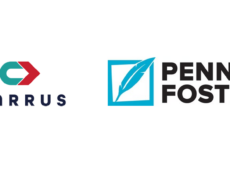
Articles
Education Technology
Higher Education
Coursera Unveils AI Function, CourseMatch, to Pair Universities with Existing Online Classes Amid Lockdowns
By Henry Kronk
April 15, 2020
On April 15, the online learning platform Coursera debuted a new machine learning tool called CourseMatch. It automatically pairs university faculties and educators with existing Coursera content to make the transition to online learning more efficient for institutions facing extended lockdowns.
Throughout 2020, the coronavirus pandemic has continued to close schools around the world. Institutions of higher ed have been scrambling to maintain instructional continuity and bring face-to-face learning online as quickly and seamlessly as possible. Many have sought to streamline this by directing their students to existing online course material available on platforms like Coursera. But the transition hasn’t always been seamless, and it isn’t always readily apparent whether an existing course will pair with one of Coursera’s.
Coursera Unveils CourseMatch to Help Universities Discover Relevant Online Learning Resources
“When we launched our Coronavirus Response Initiative on March 12, we wanted to support universities as they made the rapid transition to online learning,” said Coursera VP of Data Science Emily Glassberg Sands. “Since then, more than 2,600 colleges and universities around the world have launched Coursera for Campus programs. In addition to access, we noticed an urgent need among many institutions to identify courses in a quick and scalable way on Coursera that most closely match on-campus course offerings.
“Manual curation is too slow when it’s to be done across thousands of universities and millions of on-campus courses, especially when faculty and staff are already stretched thin. To address this need, the Data Science team at Coursera developed a natural language processing solution to automate the matching and minimize the need for human curation. We’re excited to launch CourseMatch to the world today.”
Henry Kronk: Tell me more about the logic behind CourseMatch. What information does it draw from to match an institution’s courses with those available on Coursera?
Emily Glassberg Sands: CourseMatch uses techniques from natural language processing and is powered by pre-trained word embeddings to find the courses on Coursera that are most semantically similar to each course in an on-campus catalog. For on-campus courses, the algorithms consider the course title and description from the publicly available catalog alongside more detailed syllabi and learning objectives where provided. For courses on Coursera, the algorithms consider the full text corpus – from course title and description to the lecture transcripts, assignments, and assessments.
Developing New Machine Learning and Intelligent Tools to Encourage Learning
HK: Many online learning platforms use machine learning to match learners with courses or tutors. Is this something that Coursera had considered in the past? Do you see advantages or uses to CourseMatch outside of the current pandemic? Is there potential to extend this matching technology, perhaps, to individual learners or corporate partners?
EGS: Coursera already uses machine learning to power content discovery — from search ranking to personalized recommendations across our full catalog, from courses to degrees. We also use deep learning to provide learners in-course help with a suite of behavioral and pedagogical nudges to support each learner through the learning journey. We are continually developing new machine learning applications to meet the needs of learners, educators, and employers on the platform.
HK: Do you envision matching learners to courses based on their platform-generated data?
EGS: As this is the first iteration of CourseMatch, it will evolve based on institution and learner feedback. The main goal of this tool is to support the transition from on-campus to online learning, which does not rely on an individual learner’s platform-generated data. However, as institutions expand the blended learning model, I could certainly imagine a greater need for curriculum mapping tools based on individual majors and, at the most granular level, individual learner paths.
Image courtesy of Coursera.









No Comments